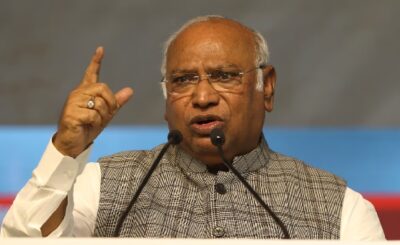Decarbonising the aviation industry stands as one of the most formidable challenges it has ever confronted. The considerable lead times associated with crucial investments intensify the urgency for companies throughout the aviation value chain to take swift action, positioning themselves strategically for the future. Aviation plays a demanding yet imperative role in achieving net-zero goals. By prioritizing both near- and long-term efforts, airlines and Original Equipment Manufacturers (OEMs) can refine decarbonisation solutions, maximising their efficacy.
Realising the gravity of situation caused by decarbonisation in the avian industry, Virendra Sharma, the Indian origin British parliamentarian has thrown down the gauntlet by launching campaign for decarbonisation in aviation.
While the aviation industry has committed to achieving net-zero flying by 2050, the trajectory toward that goal remains intricate. Consensus exists within the industry regarding pivotal actions required for decarbonization, encompassing fleet renewal, disruptive propulsion technologies, operational efficiency, sustainable aviation fuel (SAF) utilization, and carbon offsetting. Despite achieving a commendable 39% improvement in fuel efficiency from 2005 to 2019, the absolute growth of emissions surpasses these efficiency gains.
Effectively navigating the path to decarbonisation necessitates transparency and adaptability across diverse carbon mitigation measures, coupled with a focused approach distinguishing between short-term and long-term initiatives.
Upon objective scrutiny of the aviation industry’s landscape, the current efforts appear insufficient for the challenges at hand. Consequently, Virendra Sharma, the British Member of Parliament, has issued a clarion call for the establishment of a UK sustainable aviation fuel (SAF) industry, emphasising its critical role in trade, job creation, quality of life, and environmental preservation.
Addressing a Parliamentary reception alongside representatives from trade unions and industry, Sharma advocated for increased support for SAF production in the UK. He stressed the importance of creating new green jobs to aid the country’s journey toward net-zero emissions by 2050.
The launch of ‘It’s Time to Back SAF’ in the House of Commons gathered representatives from the aviation industry, trade unions, and politicians. They learned about the potential of sustainable aviation fuel derived from renewable sources such as municipal waste, waste feedstocks, or carbon capture, which can not only create green jobs but also assist the UK in meeting its carbon reduction goals. SAF has the capability to reduce carbon emissions by 70% over the fuel’s lifecycle compared to regular jet fuel.
Andy Prendergast, the national secretary of GMB Union, emphasised the need for the UK to seize the opportunity to create thousands of new unionised jobs in Sustainable Aviation Fuel. He highlighted the potential for establishing seven plants across the country, generating 60,000 new jobs, urging the Government to provide better revenue certainty to facilitate this investment.
Parmjit Dhanda, executive director of Back Heathrow (new runway project at Heathrow airport is set to be the world’s biggest privately funded infrastructure project) expressed optimism about the prospects of hydrogen-powered flight but emphasized that the upcoming decade would be the SAF decade, with all aircraft transitioning to its use. Dhanda urged the UK to capitalize on this opportunity by building SAF manufacturing plants and becoming an exporter in this field.
The first transatlantic flight using 100% SAF took place on November 28, utilising a Virgin Atlantic 380 Dreamliner from Heathrow to JFK, New York. Current plans involve five manufacturing sites for SAF, but it is estimated that at least 14 plants at seven locations across the country will be required to meet the growing demand. Talking about the solution to decarbonisation in aviation, Sharma suggested, “Transitioning to carbon-neutral aviation, such as battery-electric and hydrogen flights, could necessitate up to 1,700 TWh of clean energy by 2050. This is equivalent to the energy output of 10-25 of the world’s largest wind farms today or a solar plant half the size of Belgium. Urgent and substantial investments are imperative to adapt airport infrastructure for new value chains cantered around electric and hydrogen flight.” Finally, the aviation industry’s ability to effectively address the decarbonization challenge remains a topic that only time will unfold.
See also:
Old & tested method helps rescue workers
Inzamam’s false claim on Harbhajan stokes debate









